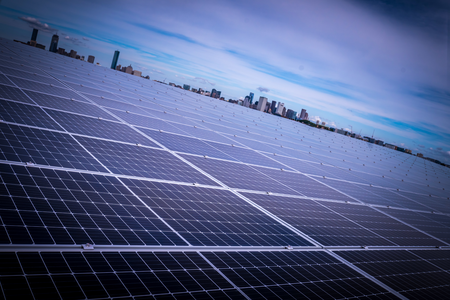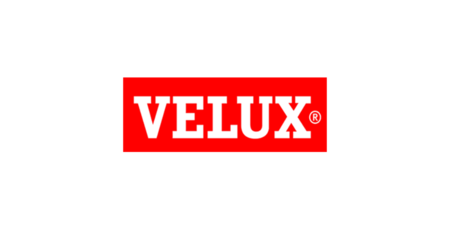
Buildings represent nearly 40% of greenhouse gas emissions and a third of global energy demand, which is why it’s crucial to aim for net zero buildings powered by renewable energy.
The Built Environment program explores the impact of buildings and infrastructure on climate. These “hard-to-abate” sectors pose the biggest challenge, but also the biggest opportunity, and this program ensures that these challenging industries are addressed.
Here are some resources to help you learn more:
Read
Gillette Stadium wins with sustainability
Gillette Stadium is going green. Enel is powering a more sustainable experience at the venue by adding a suite of clean energy solutions. The stadium also joins Enel X's demand response program to meet the grid's local needs during peak demand season.
What is the Electrified Economy and Why Should Businesses Care?
In the last decade, one fundamental truth about energy has transformed our lives and our businesses: more of the energy we use comes from the electric socket. The energy transition to electricity — specifically carbon-free electricity — is at the center of our critical need to combat climate change over the next decade. As we decarbonize our power sector, electricity will be a clean, affordable, reliable energy source.
A more sustainable skyscraper? Imagine a ‘spaceship designed by Jenga.’
Architect Ro Shroff and Shaina Yang, a student at the Harvard Graduate School of Design, dreamed up a 1,300-foot, high-rise building as a thought exercise exploring what cities might look like after COVID. They both think this building, Seattle 2030, could inspire the next generation of climate-friendly buildings.
Zero emissions zones: a tool to target benefits of vehicle electrification to communities that need it most
Low- and zero-emissions zones are a policy tool available to cities to improve air quality and can reduce congestion, raise revenue, and achieve climate goals. It is a tool thats benefits can be targeted to specific communities–communities that are disproportionately burdened by air pollution.
Protecting Health as Cooling Demand Skyrockets in India
Staying cool during extreme heat is about more than comfort—it can make the difference between life and death. Climate change is causing longer, more frequent, and more intense heatwaves than ever before, and 2020 tied 2016 as the hottest year on record. As temperatures rise, so does the demand for air conditioning to cool the places where people live. And if we source the electricity to power that cooling from fossil fuels, the increased demand energy contributes to climate change and worsens air pollution. These unintended consequences of can have serious implications for public health.
The Indigenous-led fight to stop the Line 3 oil pipeline expansion in Minnesota, explained
President Biden canceled Keystone XL. Now Indigenous groups want him to halt another pipeline project. The fight over the roughly 340-mile Line 3 pipeline expansion project, which when completed will transport 1 million barrels of tar sands oil per day from Alberta, Canada, across much of northern Minnesota to Superior, Wisconsin, has been heating up since December, when Enbridge, the Canadian multinational energy transportation company responsible for the project, began construction on the new portion of the pipeline.
Let’s Build More Sustainable Cities
Two-thirds of the world’s population is expected to live in a city within 30 years: that’s 6.5 billion people compared to the 4 billion who live in an urban center today. As Pierre-André de Chalendar writes in The Urban Challenge, Reviving the Desire to Live in the City, cities are undoubtedly our post-pandemic greatest challenge. Small or large, they contribute to almost 70% of greenhouse gas emissions; small or large, they directly impact our quality of life. There cannot be real solutions against climate change without transforming our urban centers, yet—and this is the good news—transforming our cities is a unique opportunity to make them desirable again – and sustainable.
Fact-checking the sustainable city
From San Francisco to Reykjavik and Curitiba to Oslo, the sustainable city is on everyone’s lips, but do we really know what it means? Is it greener and more energy-efficient than a traditional city? An inward-looking city or hyper-globalized? And will it require us to change our lifestyles? We sort the facts from the fiction. Welcome to Fact-Checking the Sustainable City.
Sustainable Construction: What Does it Actually Mean?
The central core of sustainable construction is the desire and commitment to respond positively to the challenges posed by climate change and diminishing natural resources, at the same time as promoting the health and wellbeing of building occupants.
Public Buildings – A Prototype for Virtuous Renovation
So, in a context of climate challenges, societal changes, diversity of use and increasing needs – can public buildings still be renovated as they were in the past? From hospitals to town halls, schools, and administrative centers – public buildings come in many forms and have a wide range of uses. Since they are expected to last over time, however, most of these buildings require large-scale investments to adapt to new economic, ecological, and societal challenges.
From Product to Materials… Is Everything Natural Necessarily More Sustainable?
Renovating an office and a home or building new ones to reduce their carbon emissions but what about products and materials? It seems obvious: natural materials are necessarily healthy and good for the environment. But that’s not always the case. Energy-intensive processing, chemical additives, unproven recyclability... Is every natural product really more sustainable? We catch up on the latest thinking.
Watch
The next decade is a critical tipping point for decarbonizing the economy and avoiding the worst-case climate scenarios projected by scientists. And at the center of our need to combat climate change is the energy transition to electricity — specifically clean, carbon-free electricity.
The urgency to design new economic models that are regenerative in nature and break the chains of the current take-make-waste approach is critical for social, environmental, and economic stability. Discover what Inclusive Circular City Design is with John Holm, Vice President of Strategic Initiatives at PYXERA Global, and Peter Perrault, SMCP, Senior Manager of Circular Economy & Sustainable Solutions at Enel North America.
Grist built this tiny model town to show what it would look like if we tried to transition to 100% clean energy.
Research shows that we are happier and healthier when closer to the natural world - and biophilic design is a way of embracing nature and bringing it into cities. This form of design helps to not only reduce stress and anxiety, but also play a vital role in restoring nature and biodiversity - creating exciting opportunities to build a richer and more diverse ecosystem in urban areas.
Act
How to Find Relief During Summer Heat Waves in the City
Extreme heat is already a public health threat—now, COVID-19 may make that impact worse. Here are some quick tips and long-term strategies to both reduce energy intake and help keep you and your neighbors cool.
Find an Urban Garden/Farm Near You
The Urban Farming mission is to provide fresh, affordable food by supporting and encouraging the establishment of gardens on unused land and space while improving air-quality, cooling spaces, raising awareness for health and wellness, educating people, providing job opportunities, and cultivating community.
Citizens’ Climate Lobby organizes by establishing local chapters in congressional districts. Working as a team you’ll experience the profound difference people can make by empowering and inspiring their elected representatives, local media, and community.
BE-Ex Ed offers on-demand content on energy efficiency and high performance design. Earn continuing education credits while learning how to master your next building project. In addition to their live program, BE-Ex Ed is be offering all on-demand courses for free September 20-26, in honor of Climate Week, using code CLIMATEWEEKNYC.
